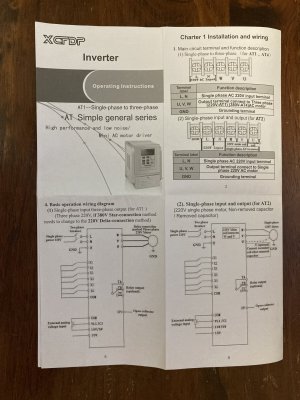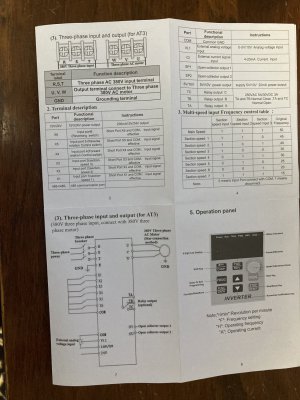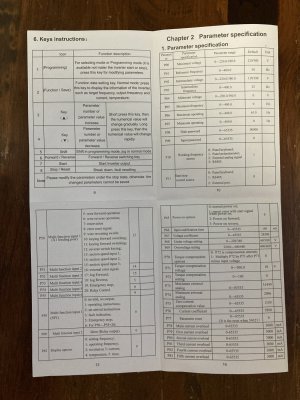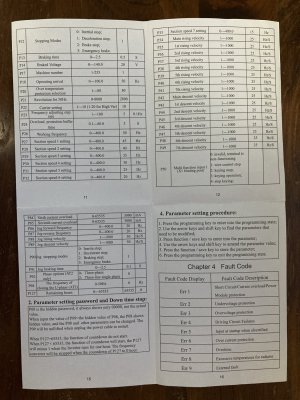I have temporarily hooked up an AT series VFD to the Enco lathe I recently purchased to check the motor. I now want to install it permanently. I want to use the clutch lever for the control of the motor forward and reverse and stopped positions. The control lever has 2 normally open switches on it. One forward and one reverse. It looks to me that I just have to use X5 for reverse and X4 for forward. To stop in neutral, what would I use? Add another switch? Would the motor stop once the N/O switch opens? Is the start circuit a latching circuit from the button on the VFD? Other questions I have are: Is a magnetic contactor needed between the VFD and the motor? I now have temporarily installed a 220 off on switch going to a pilot light then a 220 circuit breaker and then to the VFD. Would fuses be better than the circuit breaker? I need a great deal of education on wiring this VFD. I also purchased a milling machine and will need help with that also.
Thanks in advance for any info.
Thanks in advance for any info.





